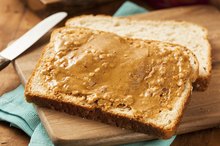What Causes Visceral Fat Vs. Subcutaneous Fat?
Poor diet and lack of exercise can lead to weight gain in the form of visceral fat, which is especially a danger as you age because it increases your health risks. Fat that is located just under your skin is subcutaneous, and fat that is deeply embedded in your abdominal region is visceral. Talk to your doctor to see if your health is at risk because of excess abdominal fat.
Visceral Fat
You cannot grasp visceral fat with your hand. It is out of reach and inside your body. It lies deeply inside your abdomen, filling the spaces between your organs. Visceral fat wraps around organs such as your liver and spleen. This kind of fat can interrupt the regular function of your organs and produce harmful substances. Though visceral fat is especially prominent in people in their mid-30s and older, people of any age can suffer from its negative effects.
Subcutaneous Fat
The Disadvantages of High Saturated Fat Levels
Learn More
Subcutaneous fat is the kind you can grasp with your hand on any part of your body, including around your middle. While visceral fat is the more dangerous of the two types, subcutaneous fat isn’t benign. The added weight caused by overeating and lack of physical activity can stress your joints and increase your risk of heart disease.
Gender Differences
Though both kinds of fat are caused by excessive caloric intake and lack of activity, women are more prone to gaining extra fat, especially at menopause. Menopausal women tend to accumulate fat around the waist and near the heart more than men. In women, visceral fat has been linked to gallbladder problems and breast cancer. In men, deeper layers of subcutaneous fat can be related to insulin resistance, which can lead to Type 2 diabetes.
Dangers
Obesity & Wheezing
Learn More
Visceral fat is associated with heart disease, metabolic disturbances and sleep apnea. Insulin resistance and glucose intolerance, which can lead to Type 2 diabetes, are also associated with visceral fat.
Prevention
You can decrease the amounts of visceral and subcutaneous fat in the same way. To reduce your risk, eat a healthy diet rich in fruits and vegetables and with moderate portions. Exercise daily, getting at least 150 minutes of moderate exercise or 75 minutes of strenuous aerobic exercise per week. Vigorous aerobics are those that increase your breathing and heart rate such that it is difficult to speak without stopping to catch your breath. Strength training also increases your resting metabolism. Muscle burns energy efficiently, so build your strength to help get rid of fat.
Related Articles
References
- Harvard Medical School: Abdominal Fat and What to Do About It
- Mayo Clinic: Belly Fat
- Centers for Disease Control and Prevention: How Much Physical Activity Do Older Adults Need?
- Centers for Disease Control and Prevention: Identifying Adolescent Metabolic Syndrome Using Body Mass Index and Waist Circumference
- Penn State: Boosting Your Metabolism 101
Writer Bio
Susan Presley has worked in health care journalism since 2007, and has been published in the American Journal of Nursing and other academic periodicals. She received her Bachelor of Arts from Truman State University and a Master of Divinity degree from Louisville Presbyterian Theological Seminary.








